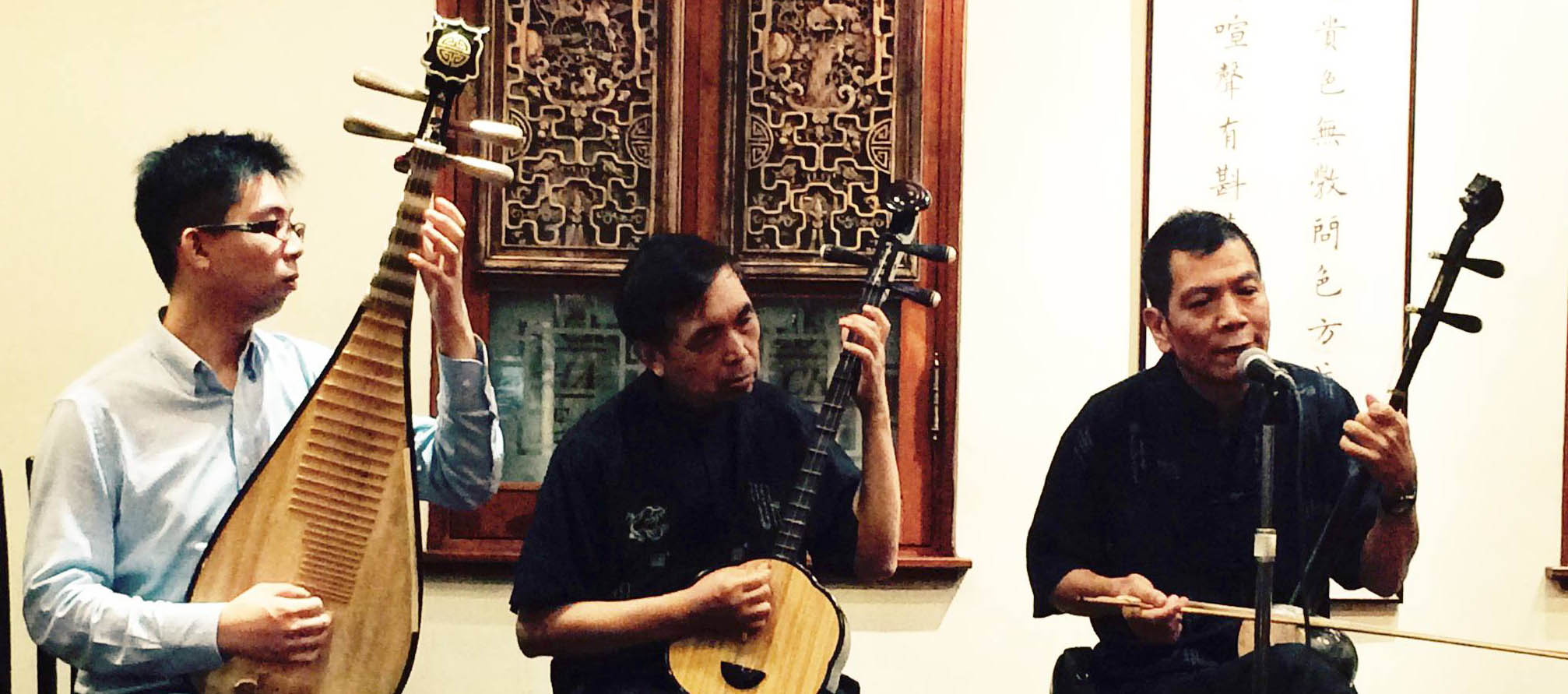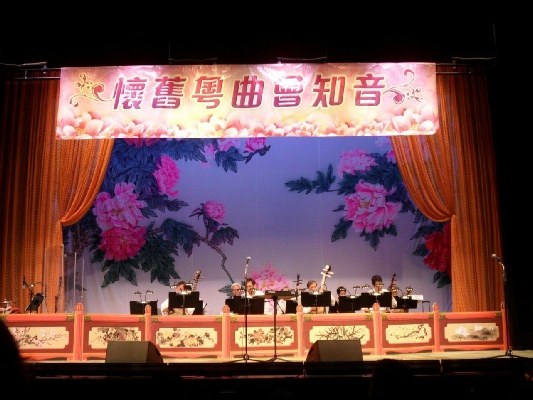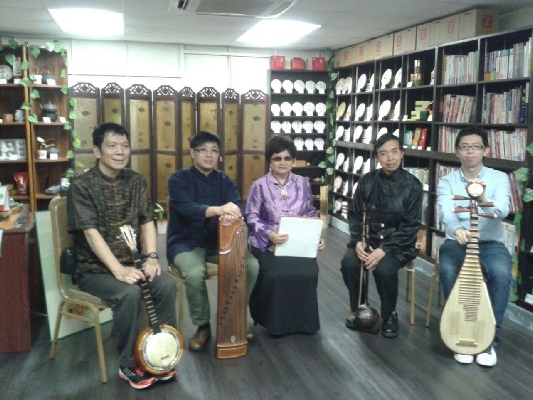Cantonese Music

Photo: Wan Yeung (pipa), Tony Law (qinqin), and Tam Sheung-chi (yehu and vocal) performing naamyam at LockCha Tea House in Hong Kong in 2015.
Cantonese music nowadays refer to various styles including but not limited to Cantopop, Cantonese opera, and narrative singing traditions like Nammyam (tune of the South) and Mukjyu (wooden fish, name of a wooden percussion instrument crucial to the singing tradition). The rise of Cantopop and switching to western music in the second half of the twentieth century have ushered a decline in the more traditional art forms in Hong Kong.
Cantonese Opera
Westerners and even young Cantonese speakers frequently reduce Cantonese opera to nothing more than piercing screeches, but a closer inspection offers a glimpse into the rich culture embedded in the theatrical art form. A score for Cantonese opera usually have only the lyrics and section titles, with limited Gongche musical notation if any. The music, like the visual aspect of the opera, is organic and improvistory as performers interpret the tone contour and opera formats often in real time (Yung 1989; Chan 1991).

Classic Cantonese Operatic Songs Concert at Yau Ma Tei Theatre on May 27, 2015
Cantonese opera, including the professional theatrical and operatic songs performances, diminished after the 1960s (Lai 2010; Yu 1987), but amateur operatic songs clubs and performances became popular from the end of the twentieth century. In 2007, it was estimated that there were three to four hundred of Cantonese operatic songs clubs active in Hong Kong (Lai 2010). While there were roughly 8,000 people who regularly attended Cantonese opera performances, thirty to forty thousand people listened to and practiced Cantonese operatic songs (ibid.).
Naamyam
Naamyam is one of narrative singing traditions in Cantonese dialect which was popular in Hong Kong and other Cantonese speaking areas until the late twentieth century. Naamyam musicians performed mostly in homes, restaurants, streets, and even brothels. While there were prostitutes who learned the tradition to appease their patrons, most of the Naamyam singers were blind artists; male singers were called Gu-si (Blind teacher), where as female singers were called Gu-gei (Blind lady) or Si-noeng (Mistress). This style of naamyam is also called Dei-seoi naamyam, literally meaning earth and water naamyam. While some scholars believe the name comes from I-Ching's hexagram because many blind artists were also fortune tellers (Yu 2014), some argue it only refers to the landscape of the coastal Cantonese region. Cantonese opera musicians later adopted naamyam and developed a new style that is still performed in Cantonese opera regularly. Scholars consider the death of blind naamyam singer Dou Wun in 1979 marked the end of the original form of naamyam (Yu 2014).
While some naamyam singers perform alone, singing while playing clapper with the left hand and Zheng, the Chinese zither, with the right hand, more naamyam singers perform with a variety of accompanying instruments, including Zheng, Xiao, Yehu, Qin Qin, Dulcimer, Pipa, and clappers.
During the course of my fieldwork, I accompanied Tong Siu-yin, one of the few naamyam singers in Hong Kong, who South China Morning Post interviewed in 2015
Tong Siu-yin performing Poem of Six Zi at Hong Kong Blue House on April 9, 2015

Tong Siu-yin Naamyam Evening on March 21, 2015
References
Chan, Sau-yan. 1991. Improvisation in a Ritual Context: The Music of Cantonese Opera. Hong Kong: The Chinese University Press.
Lai, Kin 黎鍵. 2010. Xianggang Yueju Xulun 香港粵劇敘論(Narration of Cantonese Opera in Hong Kong). Hong Kong: Joint Publishing (H.K.).
Yu, Mo Wan 余慕雲. 1987. "Xianggang Yueju Dianying Fazhan Shihua" 香港粵劇電影發展史話(History of Hong Kong Cantonese Opera Movies). In The 11th Hong Kong International Film Festival: Cantonese Opera Film Retrospective. Hong Kong: Urban Council. 20.
Yu, Siu Wah. 2014. "Ng Wing Mui (Mui Yee) and the Revival of the Sineung (Blind Female) Singing Style in Cantonese Naamyam (Southern Tone)". CHINOPERL 33 (2). 121-134. doi:10.1179/0193777414z.00000000023.
Yung, Bell. 1989. Cantonese Opera: Performance as Creative Process. Cambridge:Cambridge University Press.